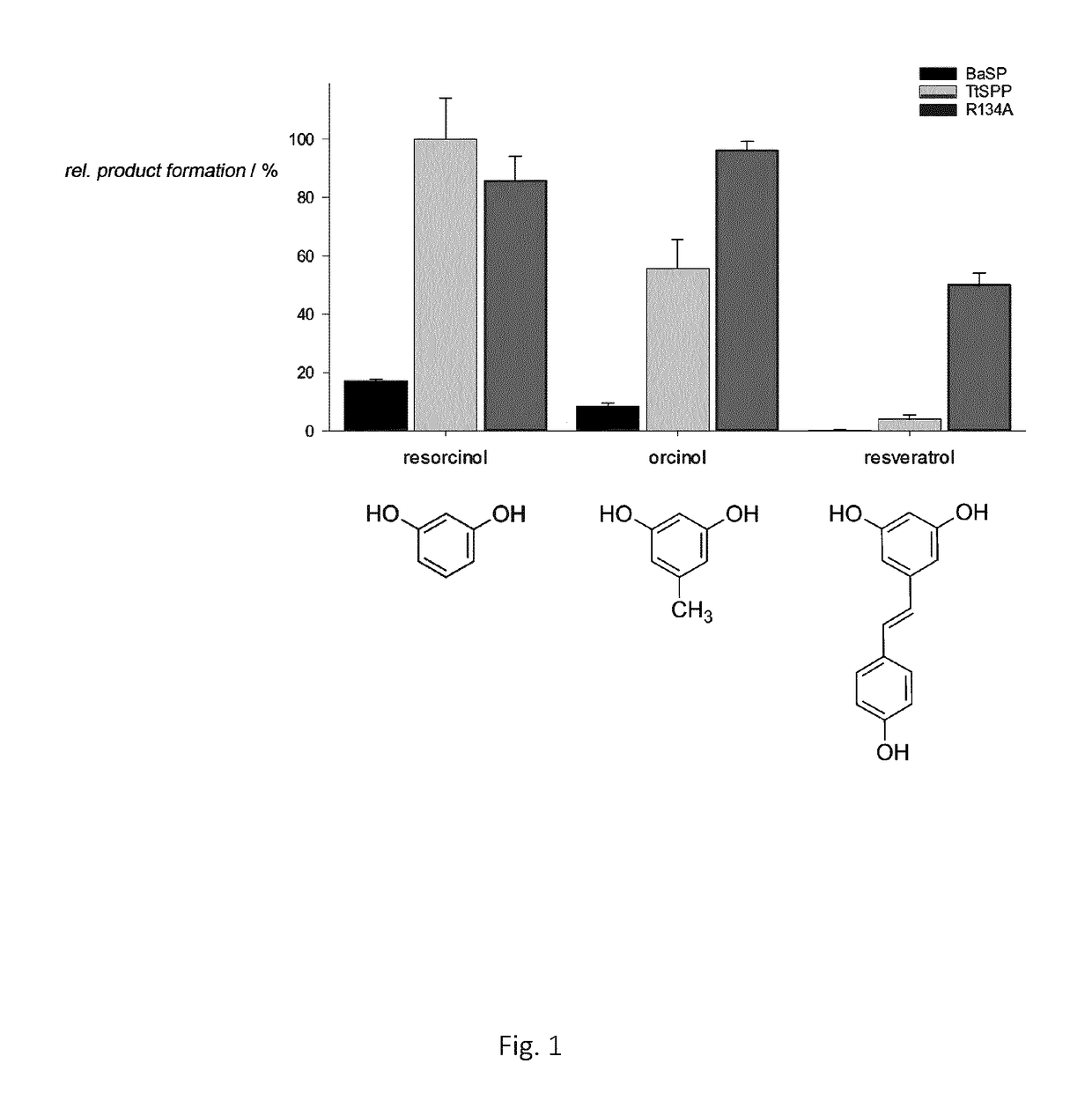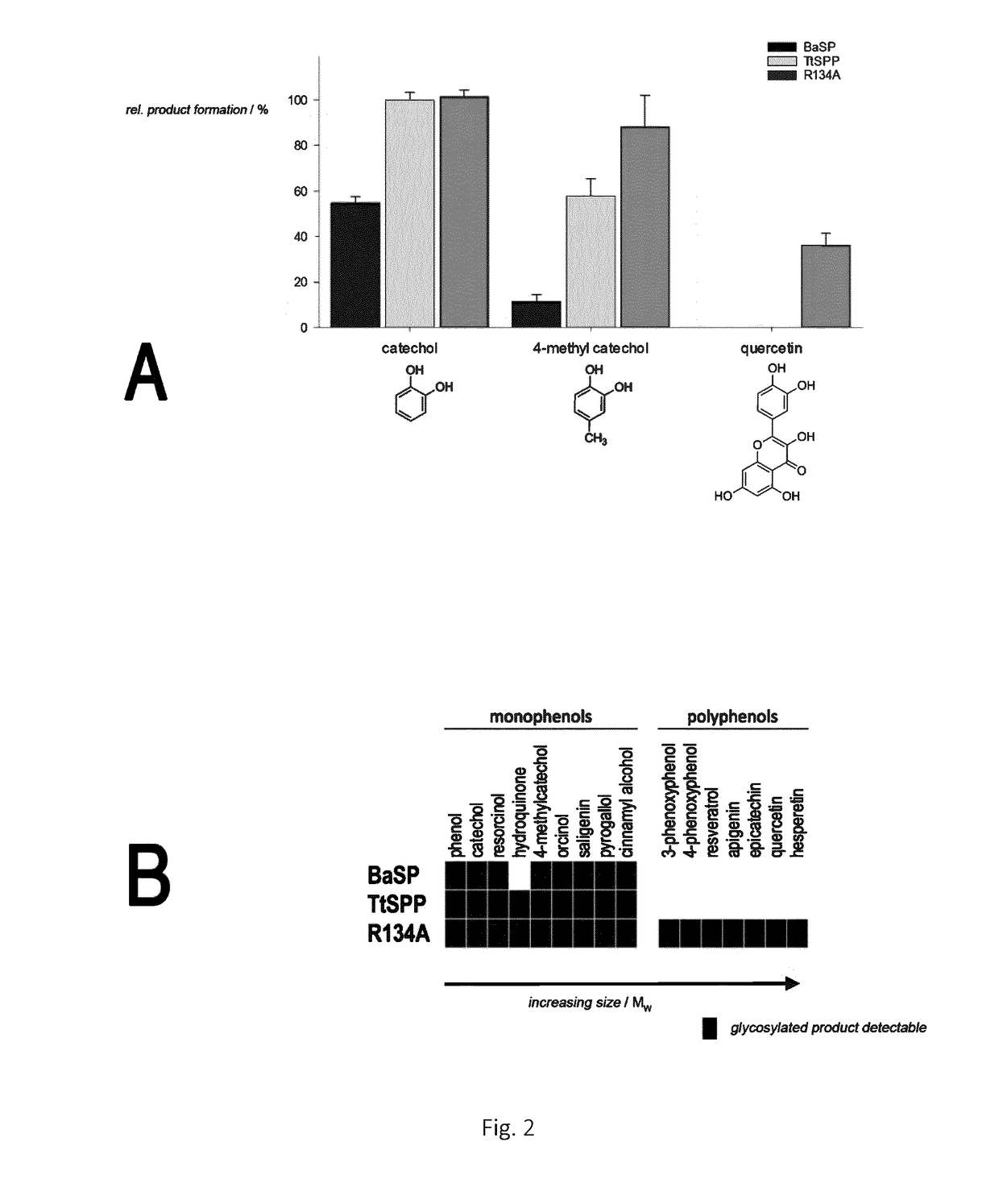Mutant sucrose phosphorylases with improved glycosylation activity towards polyphenols
a technology of sp and polyphenol, applied in the preparation of sugar derivatives, enzymes, sugar derivatives, etc., can solve the problems of low activity of sp on (poly)phenolic acceptors, high cost and large-scale applications, and low affinity of enzymes for such compounds
- Summary
- Abstract
- Description
- Claims
- Application Information
AI Technical Summary
Benefits of technology
Problems solved by technology
Method used
Image
Examples
examples
[0033]Materials & Methods
[0034]Chemicals. All chemicals were of analytical grades and purchased either from Sigma-Aldrich or Carbosynth.
[0035]Cloning, expression and mutagenesis. Vector constructs for heterologous expression of BaSP- and TtSPP-gene sequences, as well as the designed variants, were inserted into the pCXP34h vector and continuously expressed in E. coli BL21 cells as previously described (Verhaeghe et al, 2014). Site-specific mutations were introduced using phosphorylated primers for whole plasmid PCRs and successive ligation. Generation of the single site-saturation library of position R134 was done likewise using a whole plasmid amplification method with NNK-degeneracy primers. Successful randomization and final plasmids were checked by sequencing.
[0036]Protein extraction and purification. Recombinant proteins were produced and heat-purified as previously described (Cerdobbel et al, 2010). Crude protein extracts for screening purposes were generated by exposing froze...
PUM
| Property | Measurement | Unit |
|---|---|---|
| pH | aaaaa | aaaaa |
| volumes | aaaaa | aaaaa |
| time | aaaaa | aaaaa |
Abstract
Description
Claims
Application Information
 Login to View More
Login to View More - R&D
- Intellectual Property
- Life Sciences
- Materials
- Tech Scout
- Unparalleled Data Quality
- Higher Quality Content
- 60% Fewer Hallucinations
Browse by: Latest US Patents, China's latest patents, Technical Efficacy Thesaurus, Application Domain, Technology Topic, Popular Technical Reports.
© 2025 PatSnap. All rights reserved.Legal|Privacy policy|Modern Slavery Act Transparency Statement|Sitemap|About US| Contact US: help@patsnap.com



